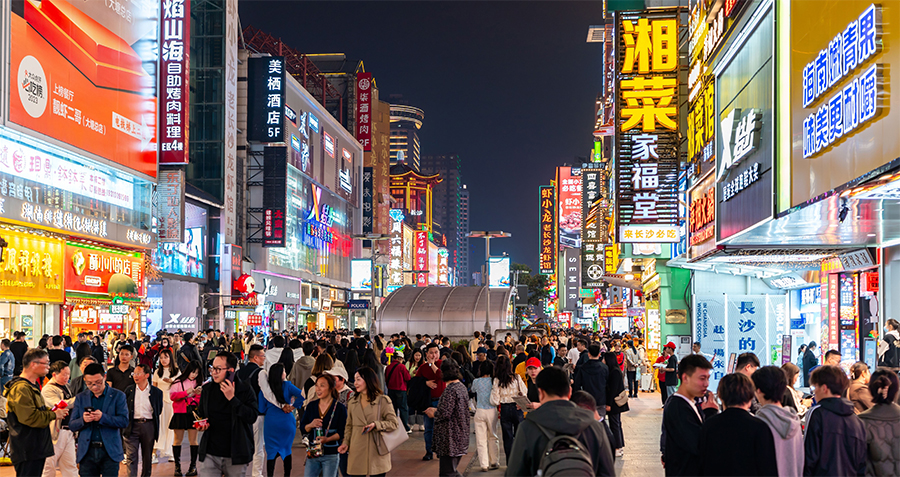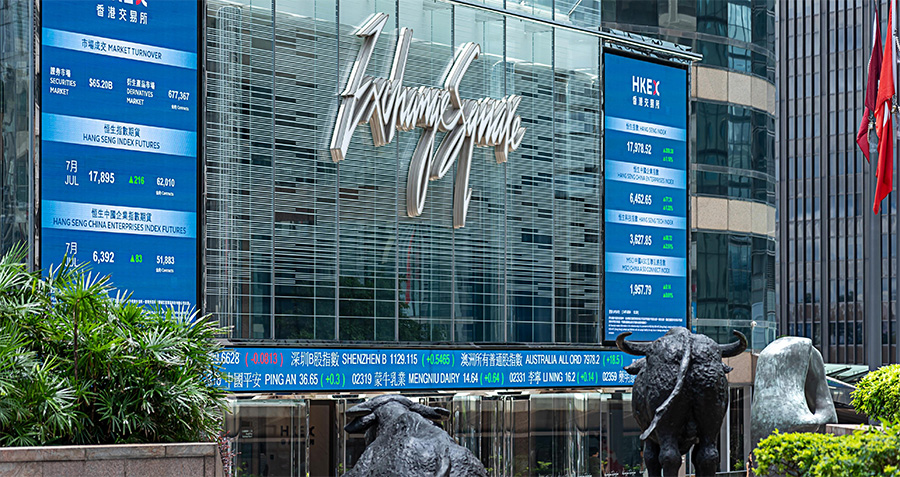
The China-led Asian Infrastructure Investment Bank is poised to reshape development in Asia, and international finance
For decades, China steadfastly operated in accordance with Deng Xiaoping’s dictum “hide your strength, bide your time”. But if there has been a defining feature of the country under President Xi Jinping, it’s that this rule no longer applies.
From overseas investments by its leading companies to new bilateral free-trade agreements, China is now going out into the world with a new vigor. And nowhere is this better demonstrated than with the Asian Infrastructure Investment Bank (AIIB), a Chinese-led institution that is set to give Asia a much-needed boost in development funding, as well as giving a greater voice to developing nations who have been hitherto muted in the world of international finance.
In spite of that, or perhaps because of it, the new institution has met with a mixed response from the US, the current dominant force in the major institutions that make up the international development architecture.
In an April press conference alongside Japan’s Prime Minister Shinzo Abe, US President Barack Obama claimed that his country was “all for” the AIIB, so long as the countries involved made sure it was run “based on best practices”. But for all that, off-the-record comments to the media have indicated at least some degree of US hostility to the institution, with allies apparently being initially warned off from joining.
It wasn’t enough to deter them: following a decision in March by the UK to join the AIIB, several other US allies scrambled to join as well. It might be just as well—Asia faces a potentially massive shortfall in infrastructure investment, with the Asian Development Bank (ADB) estimating in 2009 that the region would require $8 trillion in infrastructure funding between 2010 and 2020. The extra capital is sorely needed.
With the signing of the bank’s Articles of Agreement (AOA) by 50 countries at the end of June, the AIIB’s management structure, and the likelihood of it matching up to so-called international standards, is coming into clearer view. What is known thus far confirms that China is firmly stepping away from the backstage of international economic decision making and into the spotlight.
In-Group/Out-Group
The AIIB is emerging into a system of development banks that dates back decades and which has played a defining role in the post-war international order. From an Asian perspective, the most important are the World Bank and the ADB.
The former came into being as the International Bank for Reconstruction and Development—it would later evolve into the World Bank in conjunction with the International Development Agency—alongside the International Monetary Fund (IMF) during the 1944 Bretton Woods conference, which established the terms of the global financial order after World War II. Today, the World Bank continues to work in close cooperation with the three other members of the World Bank Group towards its goal of poverty eradication.
In contrast, the ADB, as its name implies, has a specifically regional focus. Opened in 1966 with the aim of facilitating growth in Asian countries, its membership has increased from an initial 31 to its present number of 67 regional and non-regional members, and last year its subscribed capital stock amounted to $153 billion. The aims of the bank have changed too—in 1999, its focus changed to poverty reduction.
Despite being headquartered in Manila, the ADB has, and continues to be, a Japan and US-dominated institution, with the two countries possessing 12.84% and 12.75% of votes, respectively. That, along with continued influence of Western countries on the World Bank and the IMF, has led to frustration on the part of the world’s developing economies, such as China and India, whose much-increased economic clout has gone unrecognized. Even Christine Lagarde, the IMF’s Managing Director, has criticized US intransigence when it comes to reforming the governance of the IMF.
Although the AIIB’s articles specifically state that it is intended to complement existing institutions, it is nonetheless meant to redress this imbalance.
“The creation of the AIIB is intended to contribute to a more multipolar organization of the international financial system that in Beijing’s view should no longer be exclusively shaped by US-dominated institutions,” says Sandra Heep, Head of the Economic Policy and Financial System Program at the Mercator Institute for China Studies in Berlin.
And the AIIB is but one prong in China’s attempts to change the system—in addition to several funds supporting its “One Belt, One Road” initiative, it is also a member of the New Development Bank (NDB) created by the so-called Brics countries—Brazil, Russia, India, China and South Africa—which was formally launched in July.
But the NDB differs not only in its wider geographic focus, but also in its Contingency Reserve Arrangement, which will provide liquidity to countries hit by a financial crisis. Moreover, there is an equal distribution of power, and as such it is the AIIB that is most squarely aimed at bolstering China’s international influence.
Setting the Agenda
Since its announcement by Xi Jinping and Li Keqiang on separate visits to Southeast Asian countries in 2013, the AIIB has undergone several shifts in scope and size. 22 countries had signed a Memorandum of Understanding in October 2012, but when the time came to put pen to paper on the Articles of Agreement at the end of June, 50 countries signed on the dotted line as founding members of the bank at a ceremony in Beijing, where the bank will have its headquarters.
That development was facilitated by the UK’s breaking ranks with the US, and the number is set to expand further—in total 57 countries are in line to be founding members, and they have until the end of the year to sign the articles. Those who couldn’t sign on time had been held up by various bureaucratic processes—with the exception of the Philippines, which is currently reconsidering its decision.
But the one thing that has remained constant is China’s fundamental role in the bank. Despite rumours that it might soften its stance on some issues, such as having a veto, the AOA cement both China and Asia’s leading roles in the institution.
That is in large part due to China’s outsize contribution to the bank’s subscribed capital of $100 billion—influence that comes at a cost of $29.78 billion.
With the distribution of voting rights deriving from a combination of capital contributions and founding-member status, China comes out with by far the largest share of votes, which the Center for Global Development puts at 26.06%. Under the AOA, that is enough to give China a veto on several issues, including capital increases, new members and the choice of the bank’s president, where decisions require a so-called ‘super majority’—75% of all votes and the support of two-thirds of its members.
“In the IMF and the World Bank, this super majority allows the US as the biggest shareholder to veto these decisions,” notes Heep. “In the AIIB, Beijing will now be in the same position.”
Yet in some ways, the nature of the veto is unexpected, says Scott Morris, Senior Associate with the Center for Global Development. “On the one hand, it’s not surprising given China’s outsized shareholding,” he says. “But the decision, for example, to extend the veto specifically to selection of the AIIB’s president formalizes China’s power in a way that doesn’t exist at the other multilateral development banks (MDBs).” The bank’s president is widely anticipated to be Jin Liqun, the current General-Secretary of the Interim Secretariat, who has now been formally nominated by China.
But it is not just China whose influence is cemented under the AOA. The rules also ensure a significant degree of influence for other Asian countries as regional members must hold 75% of the bank’s capital. That gives them significant clout through their resulting share of voting rights.
That influence is also reflected in the board of directors, nine of whom must be from the region, with the remaining three being non-regional. In a departure from other institutions, the AIIB will make use of a non-resident board of directors. That might bring benefits of its own, but it also affects the influence of members in other ways.
“This innovation holds the promise of a more efficient institution, but it also creates some potential for tensions among the smaller shareholders, particularly those outside of the region, since these shareholders would have otherwise relied on resident board representation to express their views on the AIIB’s operations,” says Morris. The rules further reinforce the importance of certain countries, with directors requiring a certain number of votes. While that ensures direct representation for China and India, other directors will have to come from multi-country constituencies.
Although China and the other members must now sort out some of the more detailed operational aspects of the bank, its core structure is now largely clear, and unlikely to change. “The articles are very expansive in defining potential actors, activities, and instruments for the new institution,” says Morris. “The drafters clearly wanted to create a document that does not need to be reopened any time soon.”

Means to an End
The AIIB’s stated aim is to promote “sustainable economic development”, and as its name indicates, this will primarily be done through infrastructure investment. There is a clear need for that in Asia, but the project nonetheless represents something of a throwback: other development banks now tend to shy away from such projects due to the controversy they can generate.
“By defining an institutional mission squarely around infrastructure investment, the AIIB’s architects are clearly responding to the priorities of developing countries, and actually are returning to the roots of all of the MDBs, which were much more focused on infrastructure at the time of their founding,” says Morris.
The bank has also sought to differentiate itself from other development institutions by aiming to be a faster, leaner organization with less bureaucracy, reflected in its use of a non-resident, unpaid board of directors. “The AIIB may well be able to facilitate infrastructure funding more effectively than the ADB,” says Leslie Young, Professor of Economics at the Cheung Kong Graduate School of Business. “Some countries are reluctant to borrow from the ADB due to its bureaucratic processes.”
Beyond the AIIB’s immediate aims, there is of course a wider strategic context for China’s creation of the bank. For all its outward focus, it is at least partially aimed at addressing domestic issues. “China wants to lend support to its domestic economy and provide the construction sector that is suffering from overcapacity with new markets and investment opportunities,” says Heep.
Bidding for projects isn’t limited only to members, and countries such as the UK, Germany and South Korea will all have their eye on giving a boost to their own industries through their involvement in the AIIB, but China is perhaps best placed to profit. In particular, the infrastructure projects will represent a real opportunity for China’s cement, steel and high-speed rail sectors, although it is questionable whether the sums involved are truly large enough to soak up the current excess capacity.
“Economics ensures China the most benefits from the AIIB,” says Young. “The return on infrastructure investment depends on the value added by the trade that it enables; the highest returns to such investment in Asia will involve its dominant economy—China. Both in construction and operation, Asian infrastructure opens avenues for China’s expansion through thinly-populated areas where its workers, manufactures and industrial skills have few competitors.”
Bridge to Nowhere?
The success of the AIIB will depend at least in part on its ability to act responsibly and placate other countries regarding its standards and safeguards, a capacity that is to some extent in tension with its desire for efficiency. This is unfamiliar terrain for China’s leaders, who have not led such a high-profile multilateral institution—a role they will need to grow into, and quickly. Exactly how the bank will operate on a day-to-day level remains to be seen, yet there are plenty of incentives for China to ensure it meets the necessary standards. That will involve engaging with other members and properly monitoring AIIB projects.
“Given the fact that the AIIB’s creation is at least partially aimed at establishing China as a responsible global stakeholder, Beijing will be careful to avoid the impression that it is trying to overrule the supporters of its development initiative,” says Heep.
At any rate, China still has various means of pursuing projects that other AIIB members might find more contentious. “[China] can afford to relax about AIIB governance and strategy,” says Young. “Its deep foreign exchange reserves can fund infrastructure investment that does not meet these [world] standards via other vehicles, such as the China Development Bank, the Exim Bank and state-linked enterprises.”
This reflects a broader issue: such projects are often problematic for a number of reasons. “Infrastructure projects (particularly large-scale) are prone to controversy around issues of corruption, environmental impact and local community issues—managing all of these risks continues to be a challenge for the existing MDBs and will no doubt be challenging for the AIIB,” says Morris.
And even then, Young points out that infrastructure projects can encounter “institutional weaknesses in recipient countries, such as a weak bureaucracy that cannot carry out project studies and project design.” Taken together, that means there is a likelihood that not all of the AIIB’s investments will be successful.
Although the impact on recipient countries might be mixed—and previous cases, such as South Korea and China, would arguably have developed successfully anyway without the aid of international institutions—the AIIB is certainly set to lead the way in plugging shortfalls in funding. In May, Japan announced that it would provide $110 billion in aid for Asian infrastructure projects, with half the funds dispersed through the ADB.
With the AIIB potentially becoming operational by the end of the year if it gains ratification from 10 members representing 50% of the bank’s capital, the answers to many of these outstanding questions could soon be answered. But whether this year or next, it seems safe to say that the AIIB has already been a resounding success for China. From the rush to join its ranks by Western countries to the various innovations of the AOA, the bank is a clear demonstration of China’s attempts to position itself as a regional and global leader coming to fruition. Chinese leaders like to talk of “win-win cooperation”, and here they might just have achieved it.



















